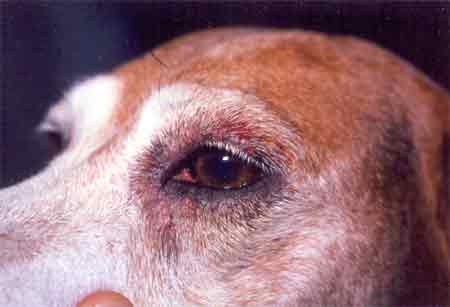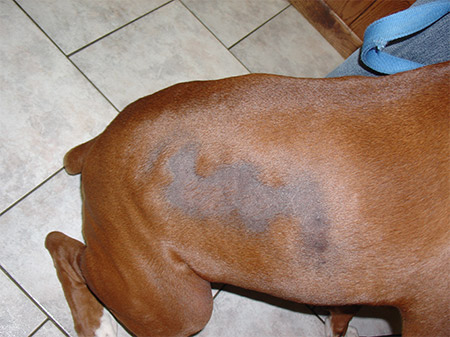The sound of our pets constantly scratching or licking can be irritating as nails on a chalkboard. Don’t blame your pooch for these bad habits, a skin condition is most likely the culprit.
1. Allergic Dermatitis
Just like us, Dogs and Cats can have allergic reactions to grooming products, food and even environmental irritants such as pollen or insect bites. A Pet with allergies can catch relentlessly, a peek at their skin can often reveal an ugly rash or raw skin. The best and easiest way to stop pets from experiencing allergic reactions is to keep them away from pollen and anything else they might be allergic to. In some cases your veterinarian may prescribe contortionists.

2. Yeast Infection
If your pet can’t seem to stop scratching an ear or licking & chewing on their toes, it may be time to ask your veterinarian to check for a yeast infection. Symptoms of an yeast infection include irritated, itchy and or discolored skin patches. These infections usually strike the paws or ears, where yeast can easily grow. There are few ways to deal with yeast infections including the use a light therapy! In some cases, your veterinarian may prescribe oral drugs or medicated baths.
3. Folliculitis
Folliculitis which is also referred to as inflammation of hair follicles is a superficial bacterial. Folliculitis is an infection that can cause sores, bumps and scabs on the skin of your pets. These skin related abnormalities are much easier t see in pets with short hair. In long haired dogs, the most obvious symptoms may be the dull coat and shedding with scaly skin underneath. Folliculitis can often occur in conjunction with other skin problems such as mange, allergies or injury. Light Therapy Treatments have been proven effective in treating skin conditions such as mange in dogs and cats in addition to antibiotics / antibacterial ointments and shampoos that may be prescribed by your veterinarian.
4. Impetigo
Sadly impetigo is most common in puppies. It can cause pus-filled blisters that can break and crust over. These blisters can usually develop on the hairless portions of the abdomen, impetigo is rarely serious and can be treated with topical solutions. In a small number of cases the infection can spread or be persistent.
5. Seborrhea
Unlike other conditions listed, Seborrhea causes pets skin to become greasy and develop scales (dandruff). Seborrhea in some cases can be a genetic disease that begins when the pet is young and can sadly last a lifetime. Most pets with seborrhea develop the scaling as a complication of another medical problem such as allergies or hormonal abnormalities. In these cases it is vital to treat the underlying cause so that the symptoms do not recur. LumaSoothe Light Therapy is very effective in helping pets with seborrhea.
6. Alopecia

Anyone who shares their home with pets knows that they all shed all over the place. How much shedding is normal depends on the breed, time of the year and any environmental related factors. But sometimes stress and poor nutrition or even illness can cause dogs and cats to lose more hair than the usual. Light Therapy has been proven to help reduce hair loss and help regrow lost hair (provided there are hair follicles left in the area). If excessive shedding persists for more than a week or you notice patches of missing fur, its time to check with your veterinarian.
When should you see the Vet?
Most skin problems are not a emergency, it is important to get an accurate diagnosis so that the condition can be treated. See your veterinarian if your dog is scratching or licking excessively, or if you notice any changes in your pet’s coat or skin, including scaling, redness, discoloration, or bald patches.

[mailmunch-form id=”509784″]


